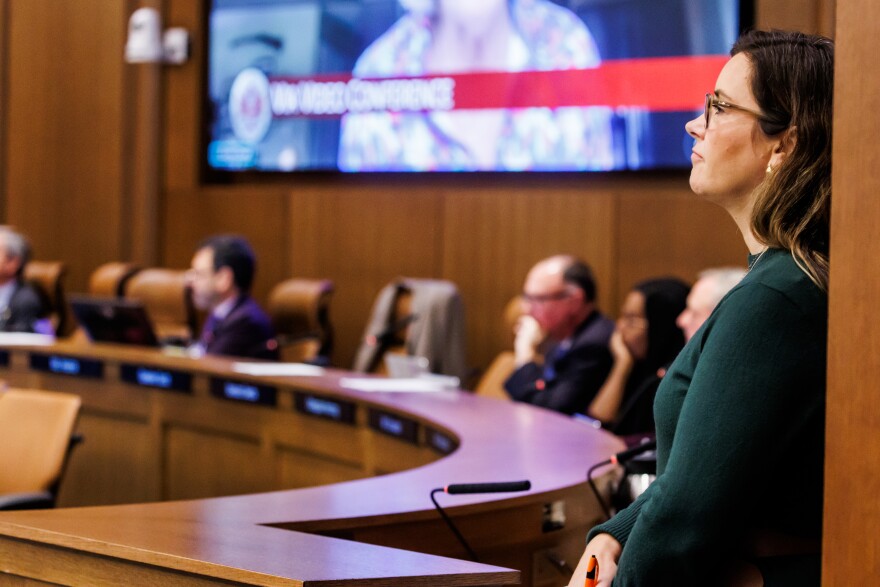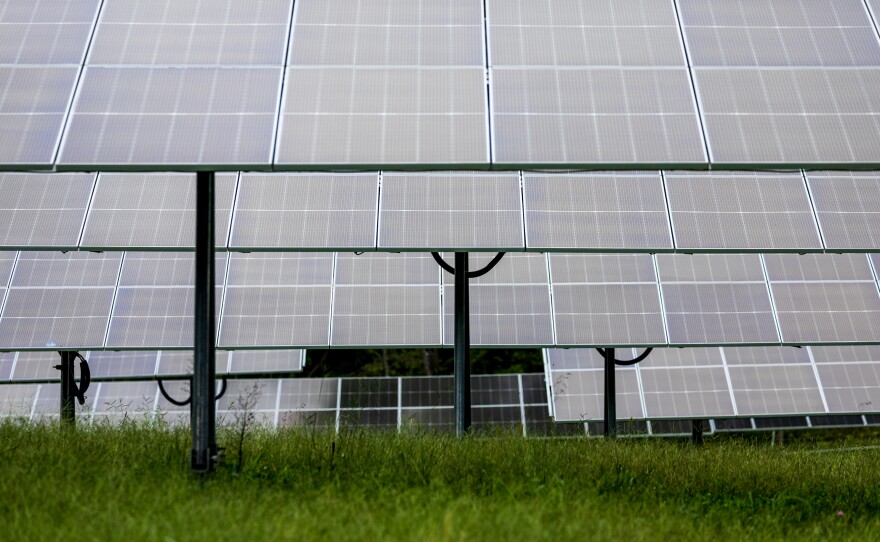A bill to create a planning framework for solar development that keeps up with Virginia’s rapidly growing electricity needs died after extensive debate this week — then quietly came back to life, before petering out a day later.
As recommended by the state Commission on Electric Utility Regulation, Sen. Creigh Deeds (D–Charlottesville) sponsored a bill that would have set regional and local planning requirements, and created frameworks to support that planning. Del. Rip Sullivan (D–Fairfax) carried a version of the bill in the House, which failed in committee.
The proposals would have created a technical assistance center, made up of state universities, to research renewable energy implementation and offer help to localities in picking solar projects. It also aimed to create an advisory committee to issue nonbinding opinions on individual solar proposals at the local level. Additionally, localities would be required to set clean energy goals in their comprehensive plans — and would be barred from setting restrictive ordinances that allow for little or no solar construction.
But concerns over local land use authority, and impacts to forest and farmland stymied the measure.
“I’ve never brought a bill that caused so much consternation on the floor of this body,” Deeds told his Senate colleagues after an hour of debate Monday.
Much of the discussion has centered around the potential scale of solar development in the commonwealth (the Virginia Clean Economy Act requires a buildout of 16,100 megawatts of solar and onshore wind capacity in coming decades) and who decides where those projects will be built.
Meanwhile, new studies from Virginia Commonwealth University, the University of Virginia and the Virginia Department of Energy offer some clarity on land use needs for utility-scale solar in Virginia, with the greatest impacts expected to come to cropland.
Connecting planning efforts or overriding local authority?
The CEUR (pronounced “cure” or “sewer,” depending on who you ask) was reinvigorated in 2023 and met throughout 2024 to craft legislation on some of the state’s biggest energy challenges.
Commission staff and members decided to tackle an increase in local opposition and denials of solar projects by localities.
Utility-scale solar, which includes projects ranging from 5 MW up to hundreds of MW, is growing rapidly in the state. Since 2016, it’s increased from 0 MW to about 3,928 MW of capacity today. That places Virginia No. 7 in the nation for total utility scale solar capacity, though the growth in smaller formats (community and rooftop) has been near the bottom nationally.
According to data gathered by the Weldon Cooper Center at UVA, more projects are approved than denied at the local level, both in terms of the number of projects and capacity in megawatts. But approvals fluctuate and denials are steadily increasing, nearing 800 MW of denials in 2024 compared to 1,000 MW in approvals. The study notes figures for last year are incomplete.
CEUR Executive Director Carrie Hearne told VPM News the siting bill’s goal was to get stakeholders on the same page.
“This is a really challenging time in terms of meeting our energy needs, and so we felt like focusing in on all the different stages of planning in the commonwealth and connecting local, regional and state was an important path to take,” Hearne said.
But the controversy began before the legislative session: A November CEUR meeting included extensive public comment opposing an early version of the proposal, which took a more authoritative approach than the versions considered by legislators this year.
The earlier language would have created a pathway for a state advisory board to issue binding opinions on “critical interconnection projects,” essentially bypassing local land use authority on certain solar facilities.
Those encroachment concerns followed the bill. Sen. Russet Perry (D–Loudoun) sided against it in a 19–20 floor vote. Sen. Lashrecse Aird (D–Petersburg) didn’t vote.
“I think that’s where the solar would end up getting put, is out in the rural parts of my district. I’m a rural Democrat and I have to represent them and protect them,” Perry said.
Senate Majority Leader and CEUR chair Scott Surovell (D–Fairfax) said he didn’t think requiring energy goals in local comprehensive plans was too onerous, and shared concerns that inaction could slow solar industry growth in the state.
“Not passing something or even continuing the conversation this session is not going to do a whole lot to give the market the kind of certainty it needs to be able to invest in solar projects in Virginia,” Surovell said.

How much land are we talking about?
So, what could solar development actually look like in Virginia, assuming the state wants to transition to a fossil fuel-free grid?
Damian Pitt, associate director of the Institute for Sustainable Energy and Environment at VCU, worked with colleagues to find an answer to that question. He found that by 2035, between 0.3% and 0.6% of the commonwealth could be covered in solar panels.
Pitt helped update a 2021 study on land use, specifically looking at the percentage of certain land covers — forest, cropland and pasture — that were converted to solar projects. The update used data current to June 2024; it doesn’t account for any new projects in service since then.
Instead of looking at the full footprint permitted for solar facilities in the state, Pitt and his colleagues used GIS software to get specific data on land covered by panels and other infrastructure.
“The permits are going to include the total acreage of all the properties that are involved in the project, right?” Pitt said. “But the projects are also going to have buffer zones and parts of the project that are left undisturbed for one reason or the other.”
Pitt said that gives a better sense of the amount of land solar actually needs.
The study found that 1 MW of solar capacity takes 6.93 acres of land on average in Virginia and that forest and cropland are the most commonly displaced land covers.
As of June 2024, 0.1% of forestland, 0.6% of cropland and 0.1% of pasture had been converted to solar.
“There's certainly a disproportionate impact on cropland, which is presumably a reflection of the fact that the types of land that these solar developers are looking for is flat land in rural areas,” Pitt said.
That impact becomes more clear when projecting future development. In a 2025 study, Pitt used current development trends to get a picture of future land use needs.
In an aggressive development scenario that outpaces VCEA requirements, roughly half a percent each of Virginia’s forest and pasture land would be lost to solar, while over 3% of cropland would be converted. About 1.2% of federally designated “prime farmland” would be converted.
Landowners, localities and legislators
Solar supporters cited the increase in project denials, along with some restrictive local ordinances, as reasons to act.
Skyler Zunk, CEO of Energy Right, a conservative group advocating for clean energy development, said protecting local land use authority is important, but that the authority shouldn’t supersede landowners.
“There are probably hundreds of landowners who might want to entertain a solar lease on their land, diversify their income, take some of their unproductive land and put it into a project that's going to pay dividends,” Zunk said after a presentation by Pitt to the Conservative Energy Caucus on Wednesday.
But according to Energy Right, nearly one-third of Virginia counties have made that almost impossible through restrictive ordinances — but not outright bans.
Deeds echoed that sentiment before bringing his bill to a vote Monday.
“The dispute here is not really between the state and localities, it’s between localities and property owners,” he said.
After the bill failed its initial vote, Perry requested it be reconsidered before crossover, the first big deadline for lawmakers to act on bills.
But Deeds passed it by for the day first thing Tuesday, a signal the bill would be left to die.



